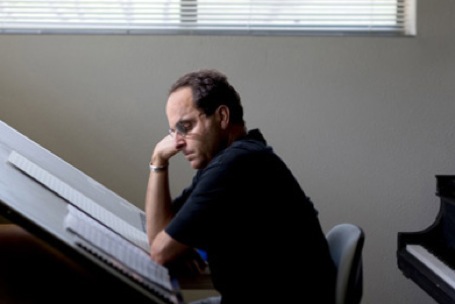 |
| Daniel Asia |
The Center is excited to welcome another skilled composer and conductor next week, as guest artist Daniel Asia presents the third installment of the Visiting Lecture Series. This Wednesday (November 5), Asia will discuss his work during a 3:00pm presentation, after working with UB graduate composers in a masterclass setting.
Daniel Asia's music has been performed around the globe, by some of the most prominent and highly-regarded performers. Widely-known for his orchestral works—including five symphonies, piano and cello concerti, and two song cycles—Asia's compositions have been performed by the orchestras of Cincinnati, Seattle, Milwaukee, New Jersey, Phoenix, Pilsen (Czech Republic), and Jerusalem, among many others. His chamber works have been programmed by the American Brass Quintet, Pittsburgh New Music Ensemble, San Francisco Contemporary Chamber Players, The Bridge Ensemble, and Lontano.
Asia's large-scale works blend elements from classical and vernacular musics, continuing the tradition of American orchestral composers like Samuel Barber and Leonard Bernstein. This is clearly apparent in his Piano Concerto (1994), whose Copland-esque first movement dynamically moves from boisterous orchestral tuttis through delicate pianistic latticework and back to dancelike unisons—all of which are regularly interrupted by jagged harmonic cascades.
Asia has received commissions from the Koussevitsky Music Foundation, Fromm Music Foundation, D'Addario Foundation for the Performing Arts/Domus, the Oberlin Wind Quintet, and the Dorian Wind Quintet, among others. In addition, he has been awarded several prestigious grants and fellowships, including a Meet the Composer/Reader's Digest Consortium Commission, UK Fulbright Arts Award Fellowhip, a Guggenheim Fellowship, MacDowell Colony and Tanglewood fellowships, as well as four EA Composers Grants, and ASCAP and BMI prizes.
Active also as a conductor, Asia is the founder and co-director (with Robert Beaser) of the New York-based ensemble Musical Elements, whose programs the Soho Weekly News has described as "intelligently balanced between seriousness and good humor," and which the New Yorker's Andrew Porter has called "warm, eager, and communicative." He currently teaches composition at the University of Arizona, Tucson, where he heads the composition department. Asia is also a regular contributor to the Huffington Post, where his articles on contemporary music regularly spark spirited conversation and debate.
One of Asia's most recent works, Nonet (2010), is excerpted below. Like much of the composer's music, it features dramatic harmonic escalations, sudden twists and turns, shrewdly constructed—and often quite dense—counterpoint, all contrasted with diaphanous, elegiac melodies. Many of these qualities have been present throughout Asia's output, even in his earliest works, which were written in a much different style. [Indeed, those familiar with Asia's written critiques of the avant-garde may be surprised by the Carter-esque angularity and disjunct melodiousness of the First String Quartet (1973), or the darkly comic turns of phrase that populate his fixed media homage to a certain trumpeter, Miles Mix (1976).] It seems that throughout his career, Asia's music has been marked by a certain rhythmic playfulness, a keen ear for melody, and an astute attention to instrumental detail. All the more reason to come hear him share his insights when his discusses his work at next week's lecture!
Daniel Asia
Wednesday, November 5, 2014
352 Baird Hall
3:00pm
—Ethan Hayden









